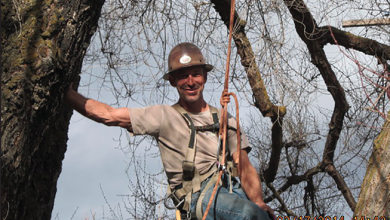Odocoileus hemionus columbianus…
Our hollow-toothed townmates the Columbian black-tailed deer have taken a liking to Ashland for a few reasons. As winter progresses, and the snow deepens in the mountains above the watershed, blacktail deer must move down the mountain to forage. They have done this for thousands of years, and you can literally set your watch to this event every year. Being a browser, instead of a grazer, they found the holy grail of nutritious, succulent, sweet plantings we Ashlanders use as landscape irresistible.
While they wintered here, they noticed something… There were no mountain lions jumping on their back in the dark of night! “How sweet it is” they thought, “and the people are so nice here, let’s just stay in town year round” And so it goes…
The downside to grouping a large amount of browsers in a confined space year-round is the availability of food. My buddy in high school had a pet blacktail buck named Bucky. I watched Bucky eat a Double Whopper burger (with cheese), patties, buns, pickles, mayo, the whole darn thing, without even slowing down! Deer-resistant plantings are just that: resistant. There is no such thing as “deer-proof” plants that carry any kind of a guarantee, as hunger will make the starving eat the impossible! Now, how to discourage our big brown-eyed town mascots from munching away at your precious plantings? Short of exclusion, like a deer fence, your options are as follows:
Deer don’t like sudden surprises (like lions in the middle of the night), and a motion-activated sprinkler works wonders to shoo them into your neighbor’s yard for a night of all-you-can-eat bliss!
To further curtail the “browse blast” these critters can inflict, concentrated “Liquid Fence” works like a champ, just be sure to reapply after a rain.
The antlers of the buck, which are shed every late winter, only to grow back the following spring, do irreparable damage to young trees and shrubs. Buck-rubbed trees are doomed from the start, as it destroys the cambium layer and the young tree just struggles to compartmentalize the damage. A physical barrier is in order here. Thin (1/4”) diameter steel stakes, or rods, driven into the ground around the dripline of your new plantings about 3 1/2 feet high should do the trick, just be sure to place them about 12 inches apart or so. Bucks don’t like to hit their antlers on metal (kinda like tin foil hitting the fillings in your teeth).
Larger tree trunks (3” in diameter) can be protected by poly plastic “trunk guards” available through nursery outlets.
The best deterrent is hazing! Remember, deer don’t like sudden surprises. If everybody just chucked a plain ‘ole soft-stuffed teddy bear at ‘em every time they tried to set up shop in your garden, they would get the message and melt back into the woods, where they belong…


